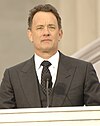Lhedwin
This article is about the archipelago. For the state that existed between 1668 and 1900, see United Kingdom of Lhedwin.
Lhedwin | |
|---|---|
| Languages | Lhedwinic - Glanish - Rigjordic Lilledic Nausikaan Navish |
Regional languages | Åndalsi Newreyan Ostric |
| Demonym(s) | Lhedwinic |
| Countries | |
| Area | |
• Total | 648,930 km2 (250,550 sq mi) |
| Population | |
• Estimate | 36,245,024 |
• Density | 56/km2 (145.0/sq mi) |
| Time zone | UTC0 to +1 |
| Internet TLD | .gl, .nv, .cc, .kr |
The Lhedwinic archipelago, commonly referred to as Lhedwin, is a geo-political region located in the northwest of the continent of Asura. It is made up of five sovereign states: Glanodel, Navack, and Crylante
Etymology
The term Lhedwin originates in the Mân Lhaeraidd language as Lledwin or Gwlad Ledwin. The word Lledwin is itself a compound of lled- "foreign" and win, the soft mutation of gwin "wine", originally meaning "mead" or referring to a specific variety of mead which was introduced to Tir Lhaeraidd by people from Lhedwin (the usual word for "mead" being med or medd). The name Gwlad Ledwin "land of mead" was sometimes applied to the region of Lhedwin, but later the word Lledwin itself supplanted this phrase. As the distinct groups of Lhedwin lacked a common name for their region, this word was borrowed from the Lhaeraidd and is the origin of the name used in the various varieties of the Lhedwinic language as well as in Lilledic and Ostric. As Lhedwinic varieties have long been the primary language of Lhedwin in general this term is the one which has entered most foreign languages.
The Vrnallian name Tambiu and Nausikaan Tappu originate in the Old Vrnallian word t'ábbu "east", as mainland Lhedwin lies to the east of the Vrnallian archipelago. In Vrnallia this has been used to refer to Lhedwin as long as that language is attested in writing, and evidently the term was transmitted to Nausikaans, with whom the Vrnallians have had contact for at least as long. The meaning of "east" was later lost in Vrnallian and the term came to exclusively mean "Lhedwin" in both languages. An archaic word Nucha in Vrnallian originally referred to Nausikaa (to which word it is cognate), later expanding to mean all of Lhedwin, but is now used only in poetry to mean "Lhedwin" or "Crylante".
History
Politics
Current leaders
Natalja Lablanck
President of Crylante
since 2019Noah Mikkelsen
President of Glanodel
since 2018Helle Schanke
President of Navack
since 2017
Natalja Lablanck
President of Crylante
since 2019Noah Mikkelsen
President of Glanodel
since 2018Helle Schanke
President of Navack
since 2017
Regional cooperation
Starting in the middle of the 20th century, the Lhedwinic states began a process of regional cooperation. The Lhedwinic Council was founded inter-parliamentary body in 19XX. However, soon after proposals for further integration among the Lhedwinic countries began to be seriously considered. The countries to form a passport union, a customs union, a cultural union, a student exchange program, a joint aviation agency, and a single market. Despite opposition to political integration, the result of the failed United Kingdom of Lhedwin, the Lhedwinic Council has gradually been expanded upon. Further integration has stalled, as the Lhedwinic nations failed to reach a consensus on a single currency.
Economies
Culture
Geography
Statistics
National statistics
| Glanodel | Navack | Crylante | |
|---|---|---|---|
| Coat of arms | 
|

|

|
| Flag | |||
| Capital | Vænholm | Berke | Nebligen |
| Independence[nb 1] | 5 March 1900 | 1 January 1900 | 19 July 1915 |
| Political system | Federal presidential republic | Federal presidential republic | Confederal directorial republic |
| Parliament | Congress of the Commonwealth | Congress of Navack | Great Council |
| Current head of state | Noah Mikkelsen | Helle Schanke | Natalja Lablanck |
| Population (2018) | 14,869,859 | 15,715,768 | 3,871,868 |
| Area | 236,326 km2 | 214,734 km2 | 97,294 km2 |
| Density | 63/km2 | 73/km2 | 40/km2 |
| Currency | Gælder (GO) | Skillingr (ʂ) | Hurten (HTN) |
| GDP (nominal) total (2018) | $901.2 billion | $864.3 billion | $257 billion |
| GDP (nominal) per capita (2018) | $60,605 | $55,000 | $66,389 |
| HDI (2018) | 0.930 (Very high) | 0.950 (Very high) | 0.950 (Very high) |
| Internet TLD | .gl | .nv | .cc |
| Calling code | +55 | +64 | +41 |
Cities
Largest cities in Lhedwin
2018 | |||||||||
|---|---|---|---|---|---|---|---|---|---|
| Rank | Country | Pop. | Rank | Country | Pop. | ||||
| 1 | Berke | Navack | 3,144,725 | 11 | Allested | Glanodel | 595,296 | ||
| 2 | Hudenholm | Navack | 2,974,051 | 12 | Riserup | Glanodel | 573,383 | ||
| 3 | Voyens | Navack | 1,705,124 | 13 | Dover | Glanodel | 556,437 | ||
| 4 | Høulding | Navack | 848,651 | 14 | Sønderburg | Crylante | 547,183 | ||
| 5 | Brestrand | Navack | 839,222 | 15 | TBD | TBD | TBD | ||
| 6 | Graylund | Glanodel | 738,512 | 16 | Horne | Glanodel | 542,496 | ||
| 7 | Broskov | Glanodel | 694,102 | 17 | ??? | Navack | 484,915 | ||
| 8 | Vænholm | Glanodel | 656,792 | 18 | Nebligen | Crylante | 472,384 | ||
| 9 | ??? | Navack | 617,805 | 19 | ??? | Navack | 441,724 | ||
| 10 | Dysted | Glanodel | 609,886 | 20 | Brosta | Glanodel | 436,111 | ||


